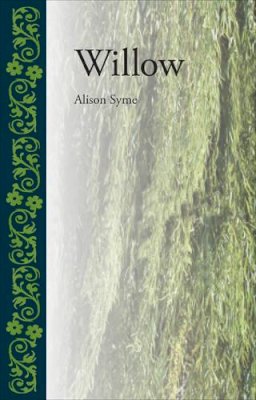
Haunters of waterways and hedgerow guardians; jewels of the garden and common companions in the fields: willows are at once the most poetic and practical of plants. For millennia they have played a key role in cultures across the northern hemisphere, forming baskets, furniture, fences and walls; treating illnesses; and appearing in Monet’s paintings, Shakespeare’s tragedies and The Lord of the Rings. The genus Salix is now increasingly used for soil stabilization and biofuel, highlighting willows’ continued importance in the present day.
Willow tells the rich tale of this many-sided plant, exploring its presence in literature, art and human history. Linked with life and death, grief and joy, toil and play, necessity and ornament, the willow has, in different times and places, functioned as a mirror of and participant in almost every facet of human existence. Although willows have been put to manifold practical uses, we must also heed their poetic lessons: willows have much to teach us about living, dying, loving, hybridizing and enriching our world, and protecting the environment.
This well-illustrated book leads us from Monet’s willows to Tang poetry, and from uses in medicine to environmental protection, in a seamless account of the special place these trees hold in world culture. Willow will appeal to anyone interested in gardens, the environment or the cultural history of plants.
Product Details
About Alison Syme
Reviews for Willow
Owen Paterson, Country Life
Those of us who despair of garden writing being reduced to picture captions or to 140-character long snippets can raise a cheer for the appearance of two new books in Reaktion Books Botanical series, a compelling collection that allows knowledgeable writers to explore the social and cultural impact of plants alongside their botanical and horticultural significance . . . Willow is both fascinating and revelatory . . . the books are well-produced, each illustration and photograph is carefully chosen and illuminates the text . . . Both books are magnificent works: breathtaking in their sweep and dazzling in their research and reflection. More like this please.
Gardens Illustrated
Willows many roles and stories is Alison Symes subject here. Spanning from fencing and cricket bats to Monets painting and The Wicker Man, Symes book plots the path of themost poetic and practical of plants. Contemporary craftspeople Lise Bech, Joe Hogan and Markku Kosonen make an appearance.
Crafts Magazine
Willow tells the rich tale of this many-sided plant, exploring its presence in literature, art and human history. This well-illustrated book leads the reader from uses in medicine to environmental protection, giving a seamless account of the special place these trees hold in world culture . . . Syme articulately conveys the lessons willow has to teach us about living, dying, loving, enriching our world and protecting the environment.
Wildlife Magazine
This book feels good in the hand in every way . . . Combined with the quality of information inside this makes it a collectors item for the serious tree lover as well as a hard-wearing handbook for the professional. One in a series of titles, each describing a single species in depth Willow is highly informative yet still a pleasure to sit down and read, chapter by chapter . . . Alison Syme is an able author as well as a profound authority. Her writing style conveys a huge amount of information in a readable, even entertaining format and her researches into willow in world culture span the globe, reaching into idiosyncratic creations in smaller countries as well as the famous cultural leaders . . . Anyone interested in trees, or even just in willows cannot fail to be entertained, informed and satisfied with everything this book offers. I can thoroughly recommend it
Living Woods Magazine
The beauty of this book for me lies in the way that all the exposure we have to everyday objects and works, such as willow-patterned china, books (like The Wind in the Willows), films (like The Wicker Man) and even wicker furniture can be put into a larger historical context. We can see characters and objects in a different light when we understand the use of willows and willow imagery as a deliberate choice to convey certain elements associated with this plant . . . After reading this book I can never look at a basket or tombstone in the same way.
Skvortsovia
